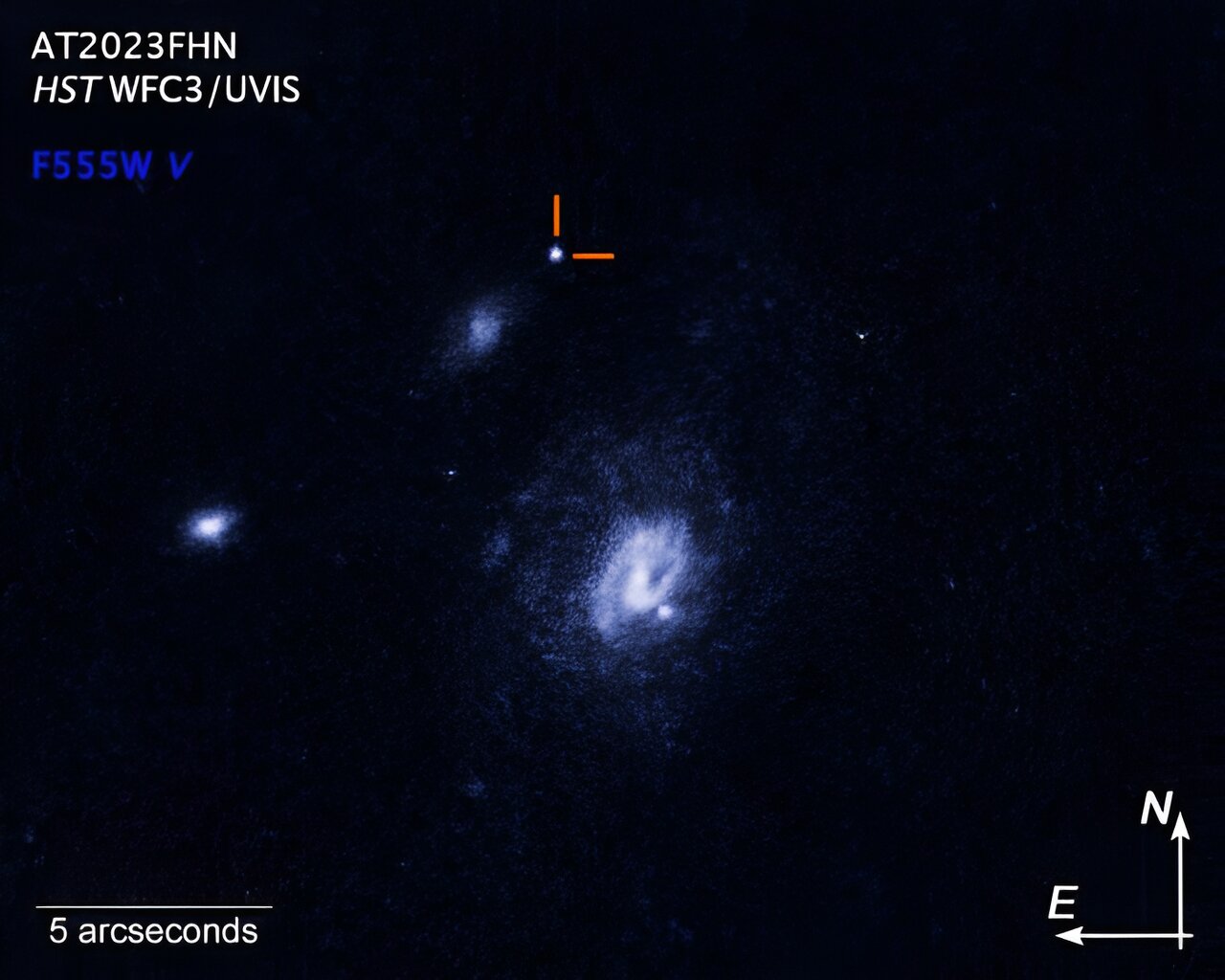For the last five years, astronomers have been spotting peculiar stellar explosions that don’t behave like any other known. These rare events are known as Luminous Fast Blue Optical Transients (LFBOT) – you may even remember the first one, nicknamed the “Cow” (AT2018cow). Already strange, they just got stranger as Hubble has observed one happening where it defintely shouldn’t be.
LFBOTS are among the brightest visible events in the universe but they are very rare; on average, just one a year has been discovered since 2018. They are similar to supernovae or gamma-ray bursts, becoming incredibly bright but they fade away in a matter of days, unlike supernovae that take weeks or months.
The best explanation for them has been considered a special type of supernova from extremely massive stars. These LFBOTs happen in the spiral arms of star-forming galaxies, which is exactly where massive stars would live their extremely short lives. So imagine astronomers’ surprise when they tracked one of these events with Hubble and found it happening in intergalactic space.
AT2023fhn, nicknamed the “Finch”, has all the characteristics of the other handful of LFBOT discovered so far apart from its location inexplicably in the empty space between two galaxies. It’s about 50,000 light-years from the large spiral galaxy and about 15,000 light-years from the small galaxy.
“The more we learn about LFBOTs, the more they surprise us,” said lead author Ashley Chrimes, a European Space Agency Research Fellow, in a statement. “We’ve now shown that LFBOTs can occur a long way from the center of the nearest galaxy, and the location of the Finch is not what we expect for any kind of supernova.”

The bright dot is the explosion known as the Finch, far away from the galaxies around it.
Image Credit: NASA, ESA, STScI, Ashley Chrimes (ESA-ESTEC/Radboud University)
The Finch, which is a scorching 20,000°C (36,000 °F), is definitely an LFBOT; data from the Gemini South telescope, Chandra X-ray Observatory, and the Very Large Array radio telescope, confirmed it.
A massive star that could produce such an explosion would live for only a few million years, like the one that produced the flattest known explosion. It would not have the time to travel far away from either galaxy before dying.
If a supernova seems unlikely, the team suggests that there might be a different path to an LFBOT. Maybe here, we are witnessing an intermediate-mass black hole (between 100 and 100,000 times the mass of the Sun) ripping apart a star. These black holes could exist in globular clusters of stars orbiting galaxies.
Another alternative is a merger between neutron stars. A pair of neutron stars might take billions of years before they spiral into each other, plenty of time to be kicked out of their galaxy, maybe in the original supernova explosions that formed them.
However, “The discovery poses many more questions than it answers,” Chrimes admitted. “More work is needed to figure out which of the many possible explanations is the right one.”
The study is accepted for publication in the Monthly Notices of the Royal Astronomical Society and is available on the ArXiv.
Source Link: Strange Rare Star Explosion Spied By Hubble Where It Shouldn't Be